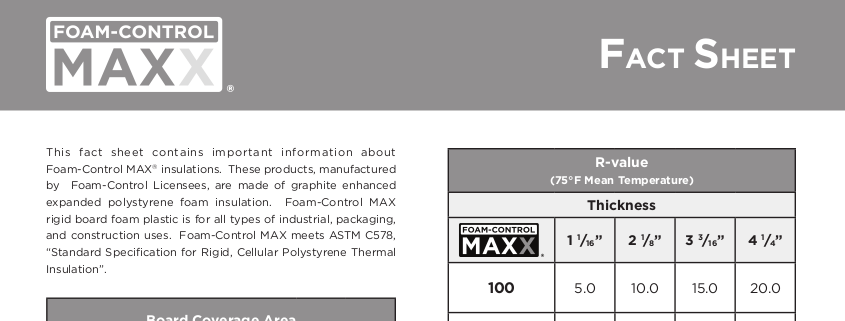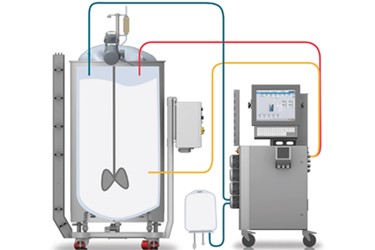A Comprehensive Guide to Executing Foam Control Solutions in Your Workflow
Effective foam control is an essential facet of operational effectiveness that typically goes overlooked. Understanding the complexities of foam generation can significantly influence both efficiency and item quality. By examining key variables such as application compatibility and personnel training, organizations can optimize their foam administration initiatives.
Understanding Foam Difficulties
Foam obstacles are a significant problem across various markets, affecting functional effectiveness and product top quality. The development of too much foam can impede processes such as blending, transport, and storage, bring about enhanced downtime and waste. In industries like food and beverage, pharmaceuticals, and petrochemicals, foam can disrupt production lines, creating item variances and contamination risks.
In addition, foam can obstruct tools capability, resulting in pricey repairs and upkeep. For example, in wastewater treatment, foam can interfere with clarifier operations, resulting in lower therapy efficiency and regulatory compliance concerns.
Comprehending the underlying causes of foam generation is vital for reliable management. Elements such as surfactants, temperature level fluctuations, and frustration degrees can all add to foam production. Identifying these elements allows industries to carry out targeted approaches that lessen foam formation while keeping item integrity.
Sorts Of Foam Control Solutions

Mechanical solutions entail using devices such as foam skimmers or defoamers. These tools physically get rid of foam from the surface of liquids, thus preventing overflow and keeping optimal levels in reactors and tanks. Chemical remedies, on the other hand, include the application of defoaming representatives-- substances that disrupt the foam structure, causing its collapse. These agents can be silicone-based, organic, or aqueous, each offering distinctive advantages relying on the application environment.
Finally, functional approaches concentrate on process modifications. This might involve modifying equipment criteria, such as temperature and pressure, or altering the flow rates of liquids to decrease foam generation. Furthermore, implementing great housekeeping methods can additionally alleviate foam development by lowering impurities that contribute to foam security.
Selecting the suitable foam control service involves evaluating the certain demands of the operation, consisting of the kind of procedure, the attributes of the materials included, and safety and security factors to consider.
Choosing the Right Products
Selecting the appropriate foam control products needs an extensive understanding of the certain application and its unique obstacles. Aspects such as the kind of foam, the environment in which it takes place, and the desired outcome all play essential duties in product option. Foam Control. In industries like food handling, it is necessary to select food-grade defoamers that abide with security policies while properly taking care of foam.
Additionally, consider the thickness of the fluid where the foam issue exists. Some items are developed for low-viscosity applications, while others are tailored for thicker fluids. Compatibility with existing processes is one more crucial facet; the selected foam control representatives must incorporate perfectly without disrupting general procedures.
An additional important factor is the technique of application. Some products may require dilution, while others can be applied directly. Examining the ease of usage and the called for dose can supply understandings right into the product's effectiveness and cost-effectiveness.
Implementation Techniques
Successful application techniques for foam control remedies call for an organized technique that aligns item choice with functional demands. The initial step includes a thorough evaluation of the processes where foam takes place, recognizing particular areas that require intervention. By engaging cross-functional teams, consisting of high quality, engineering, and production guarantee, organizations can gather understandings that notify the choice of one of the most effective foam control items.
Next, it is critical to develop clear goals click for source for foam decrease, ensuring that these objectives are measurable and achievable. This might involve defining appropriate foam degrees and the timelines for execution. Training personnel on the residential properties and application techniques of chosen foam control representatives is just as vital, as correct use is vital for optimum outcomes.
Additionally, integrating foam control options into existing process requires careful planning. Ultimately, a well-structured strategy will improve functional efficiency while effectively taking care of foam-related obstacles.
Monitoring and Examining Effectiveness
Monitoring and evaluating the efficiency of foam control solutions is vital for guaranteeing that applied techniques yield the desired results. This process involves methodical information collection and evaluation to assess the performance of foam control representatives and techniques. Secret performance signs (KPIs) should be developed before implementation, permitting a clear baseline against which to determine progress.

Reviewing efficiency additionally requires periodic evaluations of foam control treatments and agent efficiency. This Learn More can be accomplished through tasting and screening, permitting operators to figure out if current solutions are fulfilling operational needs. Furthermore, it is vital to solicit comments from staff member who interact with these systems daily, as their understandings can reveal recommended you read operational subtleties that measurable information may neglect.

Ultimately, an organized surveillance and examination framework aids identify essential adjustments, ensuring that foam control solutions remain effective, cost-efficient, and straightened with organizational goals.
Verdict
To conclude, effective foam control options are crucial for optimizing functional efficiency and maintaining item high quality. A detailed understanding of foam difficulties, integrated with the selection of proper items and application techniques, promotes the successful management of foam generation. Developing quantifiable KPIs and spending in employees training additionally improve the efficiency of foam control actions. Normal monitoring and assessment guarantee continual improvement, inevitably bring about an extra effective and structured operational atmosphere.
Implementing excellent housekeeping methods can additionally alleviate foam development by minimizing impurities that add to foam stability.
Choosing the ideal foam control products requires a comprehensive understanding of the specific application and its unique difficulties (Foam Control).Successful application methods for foam control services need an organized strategy that aligns product choice with functional demands.In conclusion, reliable foam control services are necessary for enhancing operational performance and preserving product high quality. A thorough understanding of foam obstacles, combined with the selection of ideal products and implementation strategies, facilitates the effective administration of foam generation